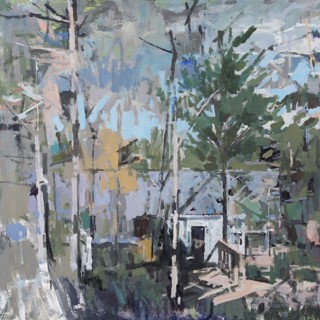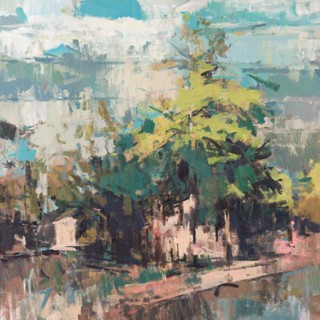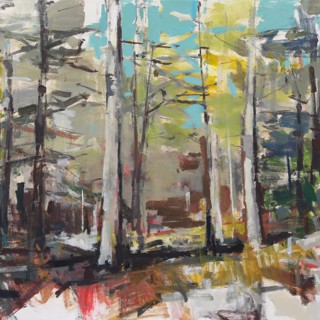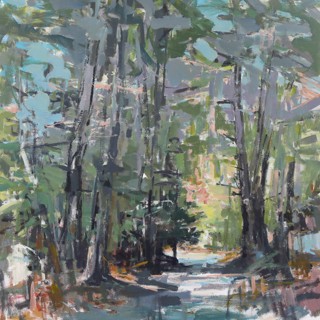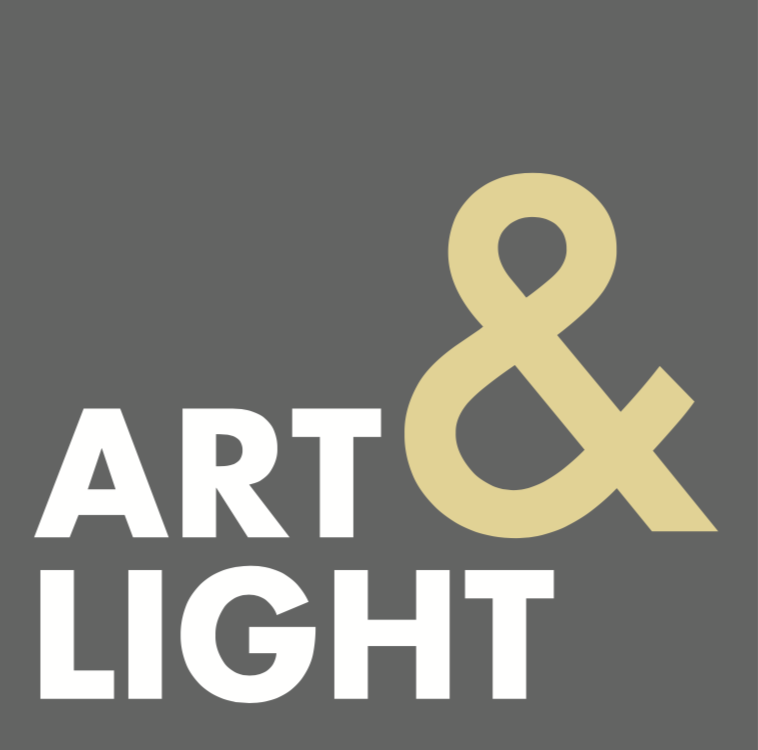10 Questions | Scotty Peek
Q: Tell us a little bit about yourself! Have you always made art? Did you go to school for fine art or did you have other plans?
A: Maybe to a fault, I never had other plans. I've always made art, and then majored in Studio Art for undergrad at Austin Peay State University and for my MFA at the University of South Carolina. I've had various jobs in museums, galleries, and as a teacher, but have always pursued my own artwork as well.
Q: What draws you to paint landscapes? Do you have the urge to paint any other subject matter?
A: I sometimes include more in my paintings, but often end up painting out everything that is not landscape. I like the suggestion of something more…a building or a person, but if I include too much, it starts to feel too literal, too understandable, too predictable. The landscape is the perfect subject for flirting with that edge between representational and nonrepresentational. It's easy to flow back and forth between what's recognizable and what dissolves into abstract or purely nonrepresentational brushstrokes and color. Often when my paintings start to make too much sense, I mess them up. I've painted over many decent landscape paintings that didn't offer any mystery or anything unexpected.
I grew up in the cab of an 18-wheeler, staring out the large windows, daydreaming for hours and hours with nothing else to do. The landscape zips past, changing, but always with similarities than carry through to the next. I don't remember feeling bored with studying the changing landscape day after day. I can't help but think that this planted the comfort that I feel looking at the landscape as the primary subject matter for my art. In it, I see the possibilities for communicating both the uniqueness of each time and place, but also the generalities and commonalities that most of our surroundings share…and a bit like the differences and similarities of people, basically the same, but different.
Q: Your landscapes are uniquely abstracted - can you tell us a little but about your process? How do you deconstruct and then rebuild each scene? Are you painting from photographs, memory or life?
A: Simply put: make a mess until the mess looks purposeful. I start from reference photos, but start to abandon the reference when the image looks too defined or predictable. I then start forcing myself to do bold things that mess up the recognizable areas. I may redefine them, but may not. I usually start liking a certain area of the painting and then start working to make the other areas work well with it, but then usually end up painting over the once protected area. It's a very loose search for the identity and character of each painting. It can't just be a good landscape painting. It has to be a good painting, despite the landscape. It has to scream that its purpose is not to mirror reality, but to be a little weird, and a little unexpected. It has to have a reason for existing beyond being a reflection of reality. I enjoy music that goes one way when you expect another direction…that stops a line before you think it will, or that doesn't rhyme when you think it will, but then rhymes when you don't expect it. I like music that doesn't choose the obvious next note. I often ask myself: If this painting was a song, would I like it or would I be bored as a listener? If it's the equivalent of a boring song, I do something rash to the painting.
Q: Currently you are an acrylic painter, are there any other mediums you want to explore?
A: I'll always see myself as a drawer, but I haven't drawn much lately. I used to be an "idea-first" artist, and would choose whatever medium best suited what I was trying to communicate. This often resulted in mixed-media installations. It was fun work, but I've embraced focusing on steady practice in one medium for the past 7-10 years. Right now, I just want to keep exploring deeper into acrylic painting, making gradual shifts in the work rather than jarring, start-over, kinds of shifts. I just feel really happy with the direction of my work and process right now, and I'm trying my best not to knock myself off-track.
Q: What colors excite you most and why?
A: Right now, it's modified grays. Grays that lean warm or cool…I love playing in that range. Those tend to be the areas of visual art that get overlooked, while the louder colors jump forward, but the subtle color variations are where I really love to play. In general, the colors that excite me most are the ones I notice that I haven't been using recently. When I notice that I haven't used a lot of red, for example, I'll smear some red on the canvas to start the next painting. It might get covered up completely, or some might show through, but it forces me to address it.
Q: Is there a time of day you find inspiration to flow more freely or do you have set times you plan to paint?
A: I tend to not wait on the muse, but rather just start painting, and see what happens. I try to take advantage of all the chances I get to paint. Day or night doesn't matter.
Q: When you are in the studio, do you prefer music, podcasts, silence or something else?
A: Rarely silence. 90% of the time, I have music playing. Never any narrative media that could pull me away, but sometimes sports on tv. I've listened to music while making art for as long as I can remember, and associate certain bodies of work with certain albums or genres. The current show was created mostly to a soundtrack of Frank Ocean and Solange, who have both been in heavy studio rotation for months.
Q: What advice would you give an aspiring artist?
A: Just make the work and keep making the work. Make lots and lots of it. What's meant to come out of you will if you let it, but you have to be working for it to happen. You'll start to recognize the things you do naturally and it becomes part of your visual language. You can overanalyze the work or your success, but for me, the best things happen when I get out of the way and just keep putting brush to canvas. I don't think that all analysis is bad, but we are prone to too much.
Q: Is there something that you want your collectors and admirers to know about you and your process?
A: I hope each of my works offers a unique story, which is often the result of my struggle with representational vs nonrepresentational. I love both so much, and I'm constantly pulled in both directions. In my own work, I rarely like one without the other though. Fortunately, I like to see tension and struggle in a work of art. I like to study the history of its making through its layers. I hope my work never looks easy. It certainly is not, and occasionally when it is, I question it, mess it up, and commence to struggling. When you own a painting of mine, you own a real thing that's unique and imperfect. It reveals its search for its identity while proudly displaying its flaws.
I'm so grateful to those that collect the work and allow me to continue making more.
Q: When we asked you to work with Holly Graham for your current exhibition, what were your first thoughts and how did you collaborate to create this beautiful show?
A: At first, I only saw the differences in our works, but by the time the show was handed over and hung, I saw the similarities. We exchanged some texts along the way, but not an organized plan. We discussed how many, and sizes, and I remember mentioning that I had recently found myself swimming in some unexpected warm colors, and she replied "me too!" When discussing possible titles, we quickly arrived on themes of reconstruction. It wasn't about deconstruction, but about assembling existing parts in different ways…not being tied to the original form of a thing. When I saw the works hanging together, it was as if each piece found its color-mate. I really was shocked at how some of the pieces used the exact same palette. That was totally unplanned.
You can enjoy and collect Scotty's work, including pieces from his show with Holly Graham, through his artist page HERE.
